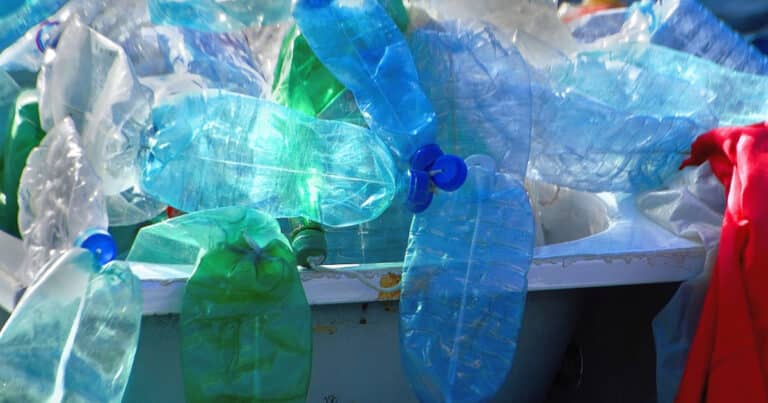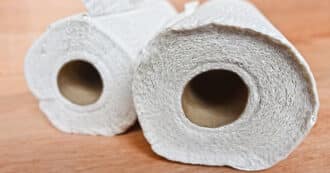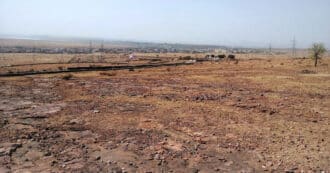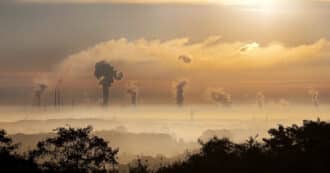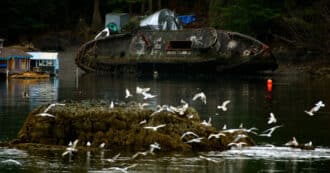By Harry Cooper – The modern world is filled with plastic. The original plastic, created in 1869, was made from treated plant fibers and was meant to replace products made from ivory, which was incredibly expensive and required killing wild elephants.
Not only was plastic more ethical, it was also more flexible, sturdier, cheaper, and easier to make. At the time, plastic was an invention that changed the world for the better.
The Growing Plastic Problem
With plastic being a supposed miracle material its easy to see why so many things today are made with it. However, as we continue to make more and more plastic we are beginning to see how continuous improper plastic disposal is harming our planet, and the material that once saved countless elephants is becoming an environmental problem that could threaten all life on Earth.
Plastic and the Environment
We have known for a while that the way that humans live their lives and treat the world has led to some serious environmental problems.
These problems range everywhere from a warming climate to dwindling drinkable water. However one of the biggest issues facing the environment today is plastic pollution.
Plastic Production
The world’s annual plastic production is 380 million tonnes! The original plastic was made from treated plant fibers. However modern plastics are made from fossil fuels.
Fossil fuels are notorious for contributing to climate change through releasing greenhouse gases when they are burned for fuel. However, the process of making plastic from fossil fuels also leaves a huge environmental foot print.
The Harmful Effects of Making Plastic
Although using oil to make plastics does not inherently release greenhouse gases, it still requires extracting the oil which can cause earthquakes and cause water pollution. Along with this, refining oil into plastic requires a lot of energy which does require burning fossil fuels and emitting greenhouse gases.
While plastic production often produces greenhouse gases, the treating process can also add many other harmful chemicals into the air and water such as toluene and benzene. These toxic chemicals can harm animals and humans by causing cancer, asthma, brain damage, and heart disease.
Animals Eating Plastic
When plastic doesn’t make its way to landfill sites it often ends up as plastic debris out in the environment. This plastic waste is an unnatural part of the natural landscape, and when animals come into contact with it, it can often lead to trouble, particularly plastic ingestion.
Plastic debris and marine litter are often mistaken as food by animals. Marine litter floats so sea turtles think plastic bags are jelly fish, sea birds think floating plastic litter is fish so that ocean pollution is now endangering all the marine environment. Today there are five zones in the world’s oceans where used plastic has accumulated. The largest of these, the great pacific garbage patch covers an area of 1.6 million square kilometers!
Health Effects of Eating Plastic
When animals start ingesting plastic it can have numerous health effects. The plastic may reduce the feeling of hunger in the animal, causing it to stop eating, even though they gain no nutrients from the plastic.
The ingested plastic can also get caught in the animal’s throat or intestines. If the plastic gets caught in this way it very often leads to death. Plastic consumption is deadly.
Microplastic
Large plastic pieces such as plastic bags, plastic bottles, and plastic straws can hurt the animals that eat them. But when microscopic pieces of plastic in the ocean are eaten, it can damage an entire food chain.
When ocean plastic pollution and marine debris get exposed to waves and radiation from the sun it gets broken down into microscopic pieces of plastic called microplastics. These microplastics are incredibly toxic to marine life and are one of the most harmful parts of marine plastic pollution.
These microplastics get ingested by tiny microorganisms. These tiny plastics contain toxic chemicals that can harm the organisms.
What makes matters extreme is that when other animals eat these microorganisms the toxic chemicals end up in them too, and when they are eaten their predators also get these toxins in their bodies. This cycle continues until it goes all the way up the food chain.
But it’s not just marine animals that are affected by this type of plastic pollution. Human consumption of plastics is an everyday occurrence when we eat tuna and other wild fish. We also end up ingesting toxic chemicals found in microplastics. The average person eats large quantities of microplastics straight off their dinner plates!
Why Do we Use So Much Plastic?
Over the years world plastic production has skyrocketed to over 300 million tonnes of plastic a year.
This much plastic is incredibly unhealthy for ecosystems everywhere. It is important to understand who is using all this plastic, and more importantly, how it’s being used.
Single Use Plastics
One of the biggest reasons why plastic pollution is as bad as it is is because so many plastic items are made to be used only once. These single use plastics are meant to be thrown out soon after being bought. This is part of today’s throwaway culture problem.
Single use plastic items such as a plastic bag or plastic bottle cause our world plastic pollution to pile up at an alarming rate. While we continue to use single use plastics the plastic pollution problem will only get worse.
Some of the biggest offenders of the non reusable plastic items are food containers, plastic bags, plastic cups, straws, plastic cutlery, plastic bottles and bottle caps. Luckily, many of these single use plastics have reusable alternatives.
Plastic Packaging
Single use plastics are a big part of growing plastic pollution. And one of the biggest contributors of single use plastics is plastic packaging.
The issues behind plastic packaging are unique because they go beyond the environmental. Not only is plastic packaging often unnecessary or overdone for certain items, but it can also cost businesses quite a bit of money.
Using extra plastic packaging such as individually wrapped goods and goods that don’t really need to be wrapped in the first place cause businesses to pay for extra plastic that will inevitably get thrown away. Along with this, they often have to pay for extra labor costs to make the extra plastic packaging.
Recycling Plastic
Many people claim that recycling helps reduce plastic waste. While this is true, it can often be very hard for plastic to be recycled.
While plastic can be recycled, it is not as easy to recycle plastic products as it is to recycle materials like paper or aluminum. Even when plastic is put in the recycling bin, it often finds its way into badly managed landfill sites or an incinerator.
Resin Codes on Plastic
Part of what makes recycling plastic so complicated are labels called resin codes. Resin codes are the triangle made of three arrows with a number in them that you find on plastic products.
In today’s world there are many different kinds of plastic, with various different additives and dyes. Because of this it is hard to distinguish between different kinds of plastic when recycling.
Luckily, resin codes tell you what kind of plastic something is made out of and whether it can be recycled. However many people don’t understand these labels and often recycle anything made of plastic even if it can’t be recycled.
Recycling Plastic Doesn’t Always Work
Even when people only recycle plastic that is capable of being recycled, plastic recycling can still be a very arduous process. Therefore, recycling is not efficient.
Since there are so many different types of plastic it requires a lot of sorting and different recycling techniques. This can make recycling plastic very costly and inefficient.
Recycling plastic is very complicated. Many recycling plants find themselves without the resources or funds to properly recycle the massive influxes of plastic they receive.
As a result, a lot of recycled plastic ends up being thrown away. Unfortunately while recycling can help with lots of kinds of pollution, it does not combat plastic pollution.
What Can We Do?
Recycling plastic is not very efficient, and it can often be hard to buy products that don’t use excessive amounts of plastic. So what can a responsible global citizen do about plastic pollution?
Avoiding Plastic
One of the best things we can do to limit plastic pollution is by avoiding plastic as best we can. Even though we may not be able to completely cut out plastic, trying our best to cut down our plastic use is a start.
We can do this by buying products in ways that don’t require excess plastic to be made. This can be done by using reusable water bottles, buying things second hand, bringing your own grocery bags to the store, and buying in bulk.
Religion and Plastic Pollution
Peter Nitshke, Congregation Manager for “Plastic Bank” wrote a blog describing his vision for sustainable use of plastic entitled, Does God have an opinion about plastic?. In this article, Nitshke describes how in 1998 he lived in a slum in Manila, capital of the Philippines, as a grassroots worker for a Christian NGO.
Nitshke saw plastic waste everywhere he looked and was finding it difficult to convince the locals not to litter, as they were just focused on surviving in the face of extreme poverty. Nitshke worked with his friends to start a recycling business, buying plastic, glass, paper and metal from locals, and it was a huge success. A mother thanked him because “they were able to buy fish now” and another shared that she could now buy “school supplies for their children”.
17 years later, Nitshke found a way to scale-up this recycling solution and started to organize the Plastic Bank in Manila, a plastic collection center. Plastic pollution is a terrible problem in our world. But Nitshke has an inspiring vision for addressing this problem:
God gave us the resources and the intellect to create plastic. But plastic never should become waste. There is no waste in nature. It is all circular and is transformed again and again. The circular model is God’s model to sustain life. With the new Interfaith program, the Plastic Bank is inviting faith-based movements to join us in creating this circular model in the way we use plastic. Our way of consuming goods and our faith cannot be separated. Our spiritual foundation and our relationship to the material world are intertwined.
The concept of waste is not part of this. Waste does not exist, but all material is being transformed. Our calling is to ensure it is being transformed into something good, life-giving and useful. I have not found any approach to plastic that displays this better than the Plastic Bank way. It powerfully uses the circular approach to transform the material, the consumer and whole communities of people collecting the material. It puts faith into action. It uses plastic, the way God would want us to use it.
* Featured image source

